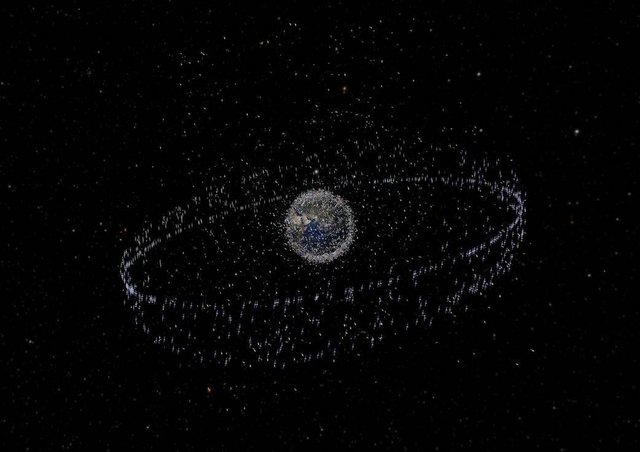There is a growing fear that space has become a massive waste disposal bin, with the earth encircled by decayed or decaying spacecraft, also with dangerous bits of orbital mess (some dissolves in the planets atmosphere). Although many people might argue that chances of being hit by space junk is very low ( in 2002, NASA estimated the chances of being hit by space debris is 1 in 3200) I still believe that this is a minor problem that if not attend to it cab turn into a major catastrophe in the foreseeable future. Artist's representation on space debris,based on density data|European Space Agency
Artist's representation on space debris,based on density data|European Space Agency
Since the first satellite went into orbit, we have noticed increasing amount of items encircling our little planet. According to the European Space agency (E.S.A)source. Who approximates that there are about 23,000 objects from about roughly 5,000 launches (as of 2012) about 65% of the objects that have been classified are a result of 250 breakups on orbit and about 10 collisions.

ARE THERE ANY LIKELIHOOD OF ENDANGERMENT?
Almost all space debris burns up in the atmosphere, larger items can reach the ground intact. In 1969 five sailors on a Japanese ship were injured by space debris, in the 2003 Columbia disastersource. Large parts of the spacecraft reached the ground and entire equipment systems remained intact. NASA warned people to avoid contact with the debris because of the possible presence of harmful chemicals. Re-entering space junk also causes ozone depletion, one study team explained the impact of de-orbiting space debris have a huge impact on stratospheric ozone, the work was done by an aerospace industry company for the environmental management division of the space and missile systems centre, they concluded that items re-entering the atmosphere can affect ozone in several ways, as objects moves through the earth's stratosphere, a shock wave is created that produces nitric oxide, a major component that causes ozone depletion. Spacecraft and rocket motors are composed of metal alloys and composite materials that melt away during re-entry, as they undergo heating they also form chemicals that react directly or indirectly to consume ozone.
Authors get paid when people like you upvote their post.
If you enjoyed what you read here, create your account today and start earning FREE STEEM!
If you enjoyed what you read here, create your account today and start earning FREE STEEM!